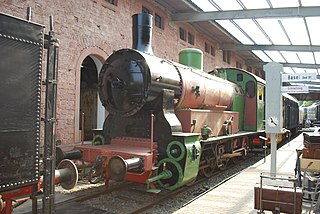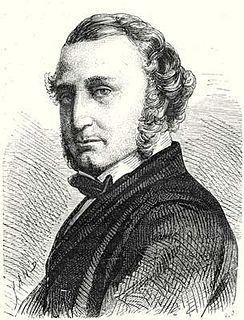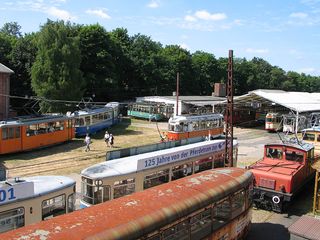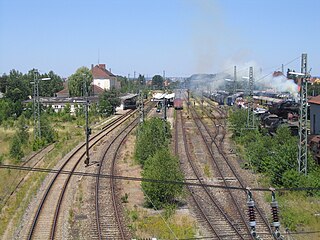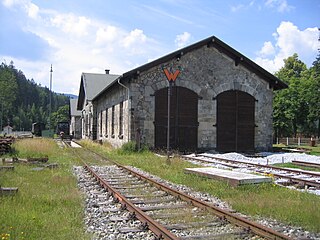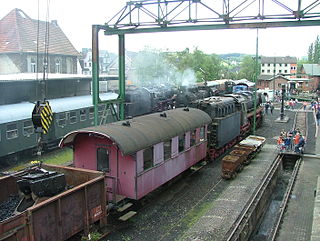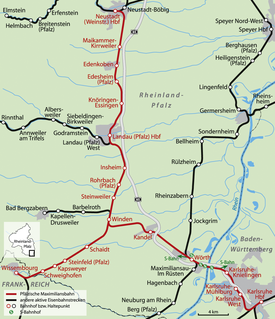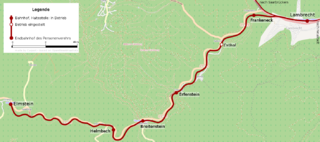


The Neustadt/Weinstrasse Railway Museum (Eisenbahnmuseum Neustadt/Weinstraße) is one of the two railway museums run by the German Railway History Company, (Deutsche Gesellschaft für Eisenbahngeschichte) or DGEG. It is located in the station at Neustadt an der Weinstraße. [1] The other one is the Bochum Dahlhausen Railway Museum.

Neustadt an der Weinstraße is a town in Rhineland-Palatinate, Germany. With 54,000 inhabitants as of 2002, it is the largest town called Neustadt.

The Eisenbahnmuseum Bochum-Dahlhausen is a railway museum situated south of the city of Bochum in the state of North Rhine-Westphalia, Germany. It was founded by DGEG, the German Railway History Company in 1977 and is based in a locomotive depot that was built between 1916 and 1918 and ceased operation in 1969. Then DGEG took over the whole area of 46,000 square metres and built up the biggest railway museum in Germany. In the middle of the museum, there is an engine shed with fourteen tracks. A preserved turntable, coaling, watering, and sanding facilities are still in operation. This museum is integrated into The Industrial Heritage Trail a route of monuments from the history of the industry.
Contents
The Neustadt/Weinstrasse Railway Museum is housed in the historic locomotive shed of the Palatinate Railway, built in the very earliest days of the railways. in what was then the Bavarian Palatinate or Pfalz. The engine shed is still largely in its original condition.
The Palatinate Railway or Pfalzbahn was an early German railway company in the period of the German Empire prior to the First World War. It was formed on 1 January 1870, as the United Palatinate Railway based in Ludwigshafen, by the amalgamation of the following railway companies:
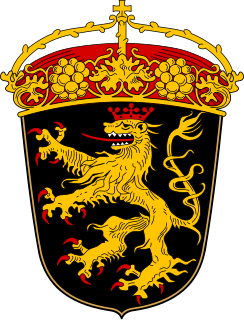
The Palatinate, historically also Rhenish Palatinate, is a region in southwestern Germany. It occupies roughly the southernmost quarter of the German federal state of Rhineland-Palatinate (Rheinland-Pfalz), covering an area of 5,451 square kilometres (2,105 sq mi) with about 1.4 million inhabitants. Its residents are known as Palatines.
